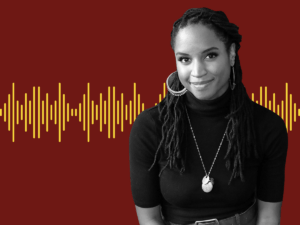
May 26, 2019; Truthout
Tomorrow, NPQ Senior Correspondent Amy Costello will interview Dedrick Asante-Muhammed and Chuck Collins on the broader issue of this country’s racial wealth gap. Stay tuned!
As NPQ’s Cyndi Suarez wrote last month, reparations is now on the agenda of the Democratic Party presidential primary. But except for Marianne Williamson—who has proposed distributing $200-500 billion over 20 years, with expenditures overseen by an “esteemed council of African American leaders”—candidates have lacked specifics.
Writing in Truthout, Dedrick Asante-Muhammad and Chuck Collins offer their strategy. Asante-Muhammad is Chief of Equity and Inclusion at the National Community Reinvestment Coalition (NCRC). Collins directs the Program on Inequality and the Common Good at the Institute for Policy Studies (IPS). Their article draws heavily on a report they coauthored last month—along with Josh Hoxie (also of IPS) and Darrick Hamilton of the Kirwan Institute for the Study of Race and Ethnicity at Ohio State University—titled Ten Solutions to Bridge the Racial Wealth Divide.
For its part, as Suarez mentions, the Movement for Black Lives (MBL) has offered its own five-point agenda on reparations. MBL’s approach centers on supporting debt-free education; a minimum livable income; healing trauma, and ensuring access and control of food, housing, and land; a rewriting of education about slavery and recovery of Black cultural sites; and a formal government assessment of the impact of slavery, including passage of HR40.
Oddly, Asante-Muhammad and Collins fail to reference MBL, although their proposals share many of its elements. The authors contend that, “We have the method and the means to fund a reparations program. Only the political will is missing.”
Who should pay the bill? The authors observe that whites benefit from the white supremacy that slavery helped create even if their own families “never had anything to do with slavery.” But they also contend that not all whites “bear equal responsibility for paying out.” Rather, they suggest that “the bill for reparations…go first to the mostly white, ultra-wealthy Americans who’ve benefited most.”
In particular, they target three revenue streams:
Sign up for our free newsletters
Subscribe to NPQ's newsletters to have our top stories delivered directly to your inbox.
By signing up, you agree to our privacy policy and terms of use, and to receive messages from NPQ and our partners.
- A graduated tax on wealth: Senator Elizabeth Warren’s proposed wealth tax (two percent over $50 million, three percent on wealth over $1 billion) would generate $2.75 trillion over the next decade, they note.
- A crackdown on wealth holdings in tax havens, which some estimate to be the equivalent of one tenth of world gross domestic product (GDP).
- A shift in federal tax expenditures, such as home and retirement subsidies, which total over $600 billion and currently benefit high-income earners to instead finance “wealth-building programs for low-wealth people, particularly those of color.”
Combined, these sources would finance the Reparations Trust Fund. Passing HR40, mentioned above, would enable Congress to set parameters for payments, including direct cash grants to individuals.
The authors also advocate broader wealth-building initiatives, such as children’s savings accounts. A 2018 paper by Dr. Naomi Zwede of Columbia’s Center on Poverty and Social Policy projected that if $80 billion a year were invested in these accounts on a graduated basis (i.e., low-income households would get most of the contributions) this could radically reduce the racial wealth gap. According to her projections, the median wealth for all youth would rise due to the program’s generational nature, but the ratio among 18- to 25-year-olds of white median wealth to black median wealth would fall from 15.9 to 1.4—a tenfold reduction. A proposal by Senator Cory Booker (D-NJ) titled the “American Opportunity Accounts Act” would implement many of these principles.
Other policies advocated include down payment assistance for first-time homebuyers living in formerly redlined areas, a federal job guarantee (as proposed in the Green New Deal), a higher minimum wage, universal health care (Medicare for All), and low-cost financial services through the post office to provide an alternative to payday loans.
The authors also propose using reparation funds to “provide one-time capital endowments to create and sustain museums and exhibits that teach the history of slavery and its aftermath,” to craft public education curricula that “disseminate the history of African Americans to all segments of society,” and to invest in historical monuments that serve as reminders of the nation’s painful history of racial oppression.
Overall, the approach outlined is admirably comprehensive. Still, the authors acknowledge that a “similar compelling case for reparations to America’s First Nations” is not part of their framework. It’s not clear if their proposed reparations trust fund would support this.
Another challenge, as Suarez has emphasized, is “how not to make black reparations just about a financial debt and forget about white supremacy.” Suarez adds, “the debt that the US owes black people is not simply financial, but social and psychological.”
Asante-Muhammed and Collins conclude, reasonably enough, that racism cannot be repaired “without a deep process that includes material reparations.” But it is not clear if their proposal fully addresses the non-economic aspects of repair, such as addressing trauma and constructing more inclusive narratives.—Steve Dubb












